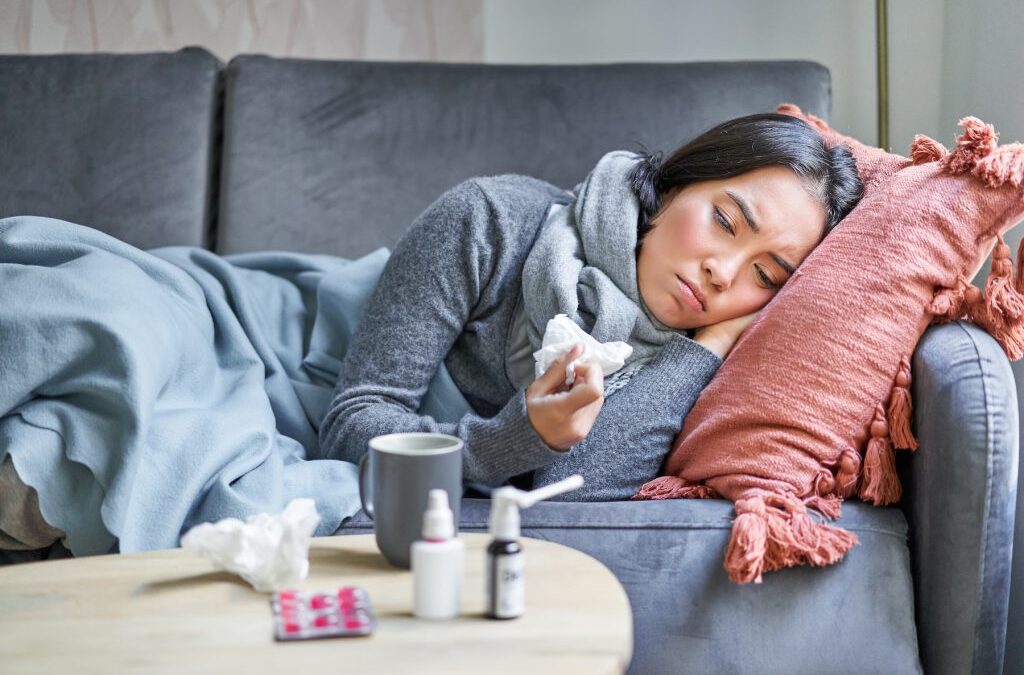As COVID-19 continues to evolve, so do public health recommendations regarding testing, quarantine, and isolation. The Centers for Disease Control and Prevention (CDC) has refined its guidance for April 2025, focusing on personal responsibility and minimizing disruptions while still protecting vulnerable populations.
This updated guidance is crucial as new variants of SARS-CoV-2 circulate and public health officials shift strategies toward long-term disease management. Here’s what you need to know about how long to stay home if you test positive for COVID-19, when to test, and what best practices can help keep you and your community safe.
Rapid tests remain a vital tool in the medicine cabinet for ongoing infection cycles of COVID-19. Be sure to stay stocked up with market-leading ASSURE-100 rapid tests this season.
How Long Should You Stay Home After a Positive COVID-19 Test in April 2025?
The CDC recommends a minimum 5-day isolation period following a positive COVID-19 test.
🔹 Day 0 is the first day of symptoms or the date of the positive test if asymptomatic. 🔹 Stay home for at least 5 full days to prevent spreading the virus to others. 🔹 If after 5 days:
- You have no fever for at least 24 hours (without fever-reducing medication).
- Your symptoms are improving (mild cough or lingering fatigue is okay).
…you can end isolation but must wear a high-quality mask around others for 5 more days (Day 6 to 10).
📌 If you still have a fever or symptoms are not improving after 5 days, continue isolating until they do. (CDC)
What If You’re Exposed to Someone with COVID-19?
Unlike early pandemic protocols, the CDC no longer recommends broad quarantine after exposure unless you develop symptoms.
If exposed:
- Monitor for symptoms for 10 days.
- Wear a mask in public settings.
- Get tested 3 to 5 days after exposure, especially if you’re in contact with high-risk individuals.
- If symptoms develop, test immediately and follow isolation guidance if you test positive.
Using a rapid home test is the quickest and easiest way to monitor your infection status.
Testing: When and How
Testing remains a cornerstone of COVID-19 management. The CDC recommends testing:
✔️ If you have symptoms such as cough, fever, fatigue, or loss of taste/smell. ✔️ If you’ve had close contact with a confirmed COVID-19 case. ✔️ Before visiting individuals at high risk of severe illness (e.g., elderly, immunocompromised). ✔️ Prior to attending large indoor gatherings or travel.
📦 Rapid home tests should be kept on hand for fast, at-home screening. (CDC Testing Guidance)
Best Practices to Prevent Transmission
Even as restrictions relax, COVID-19 is still a public health concern, especially for people with underlying health conditions or weakened immune systems. To minimize risk, follow these best practices:
😷 Mask Up Wisely – Wear a high-quality mask (like an N95 or KN95) for 10 days after exposure or isolation, especially indoors or in crowded settings.
🧼 Practice Good Hygiene – Wash hands frequently and sanitize surfaces, particularly in shared spaces.
💨 Improve Ventilation – Open windows and use air purifiers to reduce viral particles indoors.
💉 Stay Up to Date on Vaccines – The CDC continues to recommend annual COVID-19 boosters, especially for high-risk groups. Updated boosters target newer variants and reduce the risk of severe illness.
👩⚕️ Consult Your Healthcare Provider – If you’re immunocompromised or have comorbidities, consult a doctor about testing frequency and treatment options. (NIH Guidance on Prevention)
What to Do After Ending Isolation
Once your 5-day isolation period ends:
- Continue masking for Days 6–10.
- Avoid travel and high-risk environments until the 10-day mark.
- Stay home if symptoms worsen again (rebound infections can occur).
- Resume normal activities cautiously, with consideration for others.
Testing again around Day 6–7 using a rapid home test can provide additional reassurance that you are no longer infectious.
Looking Ahead: COVID-19 in a New Phase
COVID-19 is now considered an endemic virus, meaning it’s expected to circulate seasonally like the flu. While case numbers fluctuate, especially in colder months or after major holidays, public health officials now focus on risk reduction, not elimination.
With vaccines, antivirals, and accessible testing tools like rapid home kits, we’re better equipped to handle surges. But that also means individuals must take more personal responsibility for monitoring symptoms, testing, and isolating when needed.
Final Thoughts
As we move through April 2025, the CDC continues to emphasize early detection, short-term isolation, and personal accountability. If you’re feeling under the weather, don’t wait—test immediately with a rapid home test, stay home if positive, and protect others by masking and staying informed.
The tools to navigate COVID-19 are now widely available—our challenge is using them wisely.
Rapid tests remain a vital tool in the medicine cabinet for ongoing infection cycles of COVID-19. Be sure to stay stocked up with market-leading ASSURE-100 rapid tests this season.
Keywords: COVID-19 quarantine 2025, April 2025 CDC guidance, SARS-CoV-2 isolation, rapid covid testing, rapid home tests, COVID-19 prevention, public health

